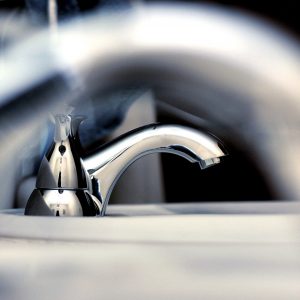The Stream, October 10: The 1972 Clean Water Act Dramatically Improved U.S. Water Quality, Study Finds
The Global Rundown
Data shows that the 1972 Clean Water Act greatly decreased pollution in U.S. waterways. Senegal considers desalination to help combat growing water shortages. Waterborne diseases begin to spread in quake-hit Indonesia. A new study quantifies the link between fertilizer and watershed contamination. Cases of dengue, a mosquito-borne disease that intensifies during the rainy season, rise in India. Hurricane Michael gains strength as it moves toward the Florida Panhandle.
“Hurricane Michael is forecast to be the most destructive storm to hit the Florida Panhandle in decades. It will be life-threatening and extremely dangerous. You cannot hide from this storm.” –Rick Scott, Governor of Florida, in reference to the incoming storm. Hurricane Michael is expected to make landfall on Wednesday as a Category 3 storm. Mandatory evacuations have been ordered in 10 coastal counties, where intense rain and storm surges are predicted. USA Today
Latest WaterNews from Circle of Blue
What’s Up With Water – October 8, 2018 – “What’s Up With Water” condenses the need-to-know news on the world’s water into a weekly snapshot. Coverage this week includes: PFAS contamination in Tucson, Arizona, drought-driven economic losses in China, and Australia’s driest September on record.
HotSpots H2O, October 8: Millions in South Sudan Rely on Distant, Dirty Water Sources — In many areas, residents rely entirely on unimproved water sources, including rivers, swamps, and unprotected wells, many of which are shared with animals.
By The Numbers
50 million U.S. water quality samples analyzed by researchers at the University of California – Berkeley. The samples, which were gathered from 1962 to 2001, show a dramatic drop in 25 measures of pollution following the 1972 Clean Water Act. Science Daily
25 percent Proportion of Senegal’s population that lives without basic access to clean water. The country recently announced plans to build its first desalination plant, but activists claim the plant could upset sacred land and the environment around it. Al Jazeera
Science, Studies, And Reports
A study by the University of Montreal measured the amount of nutrients that can build up in a watershed before polluting downstream ecosystems. In the case of phosphorus, the threshold amount was 2.1 tonnes per square kilometer of land, a measure that researchers say is surprisingly low. If too much phosphorus accumulates in a waterway, it can spark excessive plant growth and toxic algae blooms. Science Daily
On The Radar
As rescue efforts draw to a close following Indonesia’s 7.5 magnitude earthquake, health officials are turning their focus to the prevention of waterborne diseases. Sanitation and water access remain a major concern in the city of Palu, as well as surrounding areas. Up to 40 percent of the 70,000 people displaced by the quake likely have diarrhea, according to a volunteer doctor. Reuters
Spotlight: India
Follow The Stream for daily coverage on India’s water crisis.
Nearly 500 new cases of dengue, a mosquito-borne disease, were reported in India during the past week. Cases often spike following heavy monsoon rains, since the mosquitoes tend to breed in pools of stagnant water. Residents are encouraged to cover water containers and watch for accumulation of rainwater in cans or bottles. India Times

Kayla Ritter is a recent graduate of Michigan State University, where she studied International Relations and Teaching English to Speakers of Other Languages. She is currently based in Manton, Michigan. Kayla enjoys running, writing, and traveling. Contact Kayla Ritter





Leave a Reply
Want to join the discussion?Feel free to contribute!